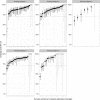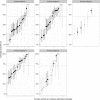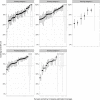The Vaccination of 35,000 Dogs in 20 Working Days Using Combined Static Point and Door-to-Door Methods in Blantyre, Malawi
- PMID: 27414810
- PMCID: PMC4945057
- DOI: 10.1371/journal.pntd.0004824
The Vaccination of 35,000 Dogs in 20 Working Days Using Combined Static Point and Door-to-Door Methods in Blantyre, Malawi
Abstract
An estimated 60,000 people die of rabies annually. The vast majority of cases of human rabies develop following a bite from an infected dog. Rabies can be controlled in both human and canine populations through widespread vaccination of dogs. Rabies is particularly problematic in Malawi, costing the country an estimated 13 million USD and 484 human deaths annually, with an increasing paediatric incidence in Blantyre City. Consequently, the aim of this study was to vaccinate a minimum of 75% of all the dogs within Blantyre city during a one month period. Blantyre's 25 administrative wards were divided into 204 working zones. For initial planning, a mean human:dog ratio from the literature enabled estimation of dog population size and dog surveys were then performed in 29 working zones in order to assess dog distribution by land type. Vaccination was conducted at static point stations at weekends, at a total of 44 sites, with each operating for an average of 1.3 days. On Monday to Wednesday, door-to-door vaccination sessions were undertaken in the areas surrounding the preceding static point stations. 23,442 dogs were vaccinated at static point stations and 11,774 dogs were vaccinated during door-to-door vaccinations. At the end of the 20 day vaccination programme, an assessment of vaccination coverage through door-to-door surveys found that of 10,919 dogs observed, 8,661 were vaccinated resulting in a vaccination coverage of 79.3% (95%CI 78.6-80.1%). The estimated human:dog ratio for Blantyre city was 18.1:1. Mobile technology facilitated the collection of data as well as efficient direction and coordination of vaccination teams in near real time. This study demonstrates the feasibility of vaccinating large numbers of dogs at a high vaccination coverage, over a short time period in a large African city.
Conflict of interest statement
The authors have declared that no competing interests exist.
Figures






References
Publication types
MeSH terms
Substances
Grants and funding
LinkOut - more resources
Full Text Sources
Other Literature Sources
Medical

